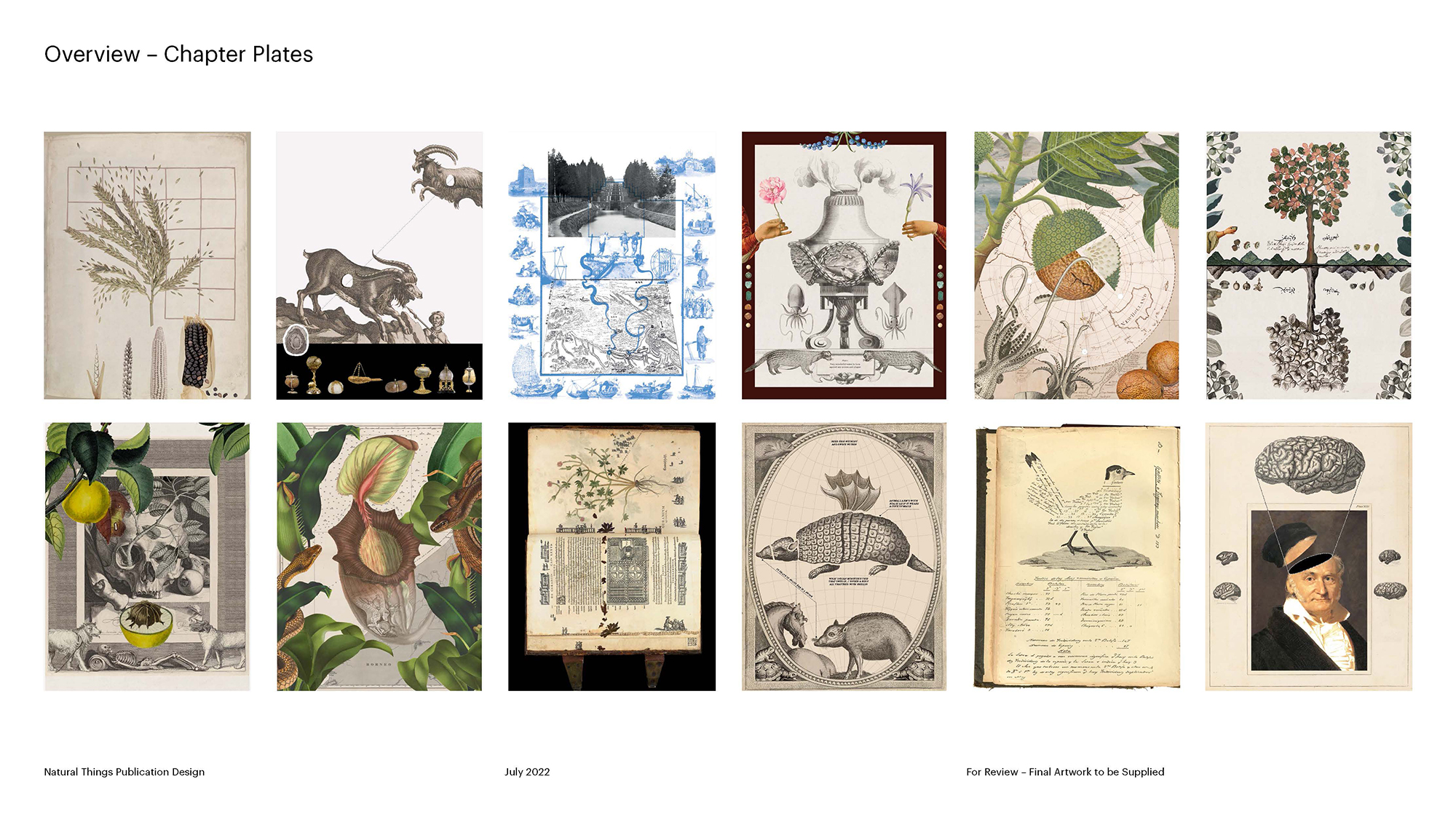
Natural Things in Early Modern Worlds is a collection of essays (written by international historians) and original visualisations (created by Katie Dean and myself) which explore the relationships among natural things – ranging from pollen in a gust of wind to a carnivorous pitcher plant to a shell-like skinned armadillo – and the humans enthralled with them. Below are 12 full page illustrated plate Katie Dean and I created, in close collaboration with the editors and authors of each chapter.












These plates have been digitally collaged from archival material relevant to the chapter, supplied by authors and sourced by the editors and us. Rather than providing visual evidence or visual summaries of a particular aspect of the written text, these images are visual provocations; they are deliberately complex, ambiguous and often surprising, inviting readers to critique the way the archival material is visually represented in scholarly publishing, and the inherent bias embedded in the process of creating images. In this way, the plates function like editorial illustrations, inviting contemplation on a theme, problem or object central to the written text rather than illustrating a specific point.
Ideally, readers of this book who revisit an illustrated plate after reading the chapter may find, through reflection and deliberation, fresh interpretations of both the image and the written text. Readers must work through the assembled visual elements of the plate, in the same way that the authors (and editors, and designers) have worked through collections of material culture, to make sense of these complex phenomena.
In a chapter in the book, Katie and I frame collage as a critical image-making process and describe how our image-making practice for this book involved collaboration with the editors and authors, to provide insight into how images are created with particular bias and intentions, and to help guide curious readers toward thresholds of interpretation for the illustrated plates in this book.


Above: Two of the visualisations with the source material shown around the image.
From the publisher’s blurb:
Episodes from 1500 to the early 1900s reveal connected histories across early modern worlds as natural things traveled across the Indian Ocean, the Ottoman Empire, Pacific islands, Southeast Asia, the Spanish Empire, and Western Europe. In distant worlds that were constantly changing with expanding networks of trade, colonial aspirations, and the rise of empiricism, natural things obtained new meanings and became alienated from their origins. Tracing the processes of their displacement, each chapter starts with a piece of original artwork that relies on digital collage to pull image sources out of place and to represent meanings that natural things lost and remade.
Accessible and elegant, Natural Things is the first study of its kind to combine original visualizations with the history of science. Museum-goers, scholars, scientists, and students will find new histories of nature and collecting within. Its playful visuality will capture the imagination of non-academic and academic readers alike while reminding us of the alienating capacity of the modern life sciences.
“This excellent collection of essays brings alive crucial exchanges of ideas and objects that characterize the scientific and cultural history of the early modern world. Combining archival erudition, critical historiography, and imaginative visualization, this book is an inspiring new resource for teaching as well as further research. In evocative essays, we are reminded that ‘seeing’ things that make up various understandings of nature should be understood as an active pursuit, whether for us today or in the way we ascribe it to past peoples whose imaginations we try to bring to life in our work. The book provides one of the most successful cases I know for using images as crucial historical evidence rather than as indexical illustrations.“
Shahzad Bashir, Aga Khan Professor of Islamic Humanities, Brown University USA
